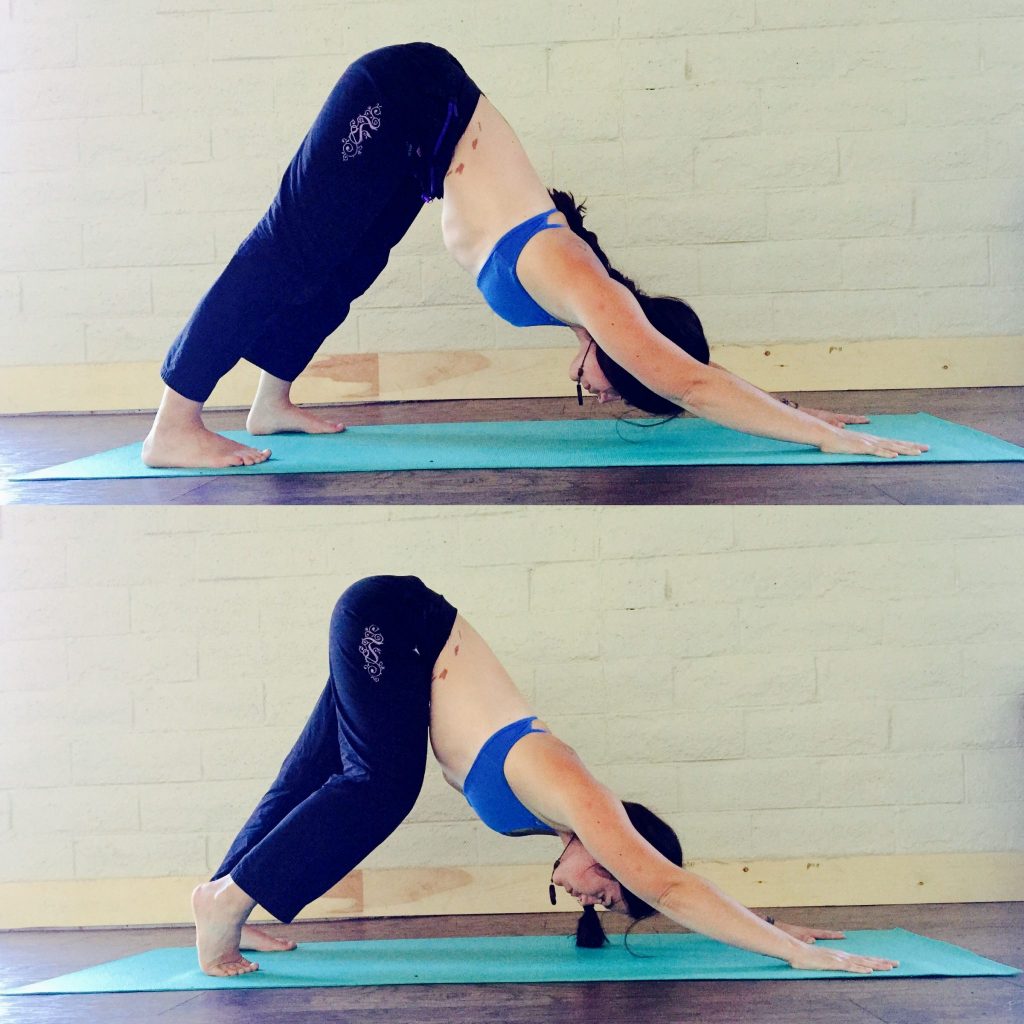
How to get flexible fast for BJJ is probably the question of all BJJ practitioners. Jiu-Jitsu is a martial art for anyone. From pro-athletes to desk workers, from kids to grapplers over 40, everyone has a place in BJJ. However, the nature of the sport is such, that it does require certain athletic abilities, and being flexible is very important for BJJ. Getting flexible for BJJ is not really a problem. It just requires some time and dedication to improve your flexibility to the point to have an unpassable guard and many other benefits.
The good news is that you do not have to possess any of them before you sing up for class. BJJ will develop every athletic ability you need to progress in the art. It will build strength by teaching you how to manipulate resisting objects. Your conditioning capacities are going to increase thanks to imposed demand. And you’re going to figure out how to get flexible in positions you never thought you could achieve.
Today’s focus is going to be on this last point. How to get flexible for Brazilian Jiu-Jitsu is not rocket science. Actually, BJJ is going to take care of the basics just by training. Certain areas of the body get more attention in flexibility terms when rolling around with people. Now, unless you’re unusually stiff, you’ll get a decent level of hip and shoulders flexibility just by training regularly. And, even if you’re stiff and/or coming back from injuries, there’s a way to improve flexibility.
Learning How To Get Flexible
First, all you stiff and brittle people out there, you have nothing to worry about – flexibility can be trained. Despite many people thinking it has lots to do with genetics, it is a quality that can be trained. Actually, the genetics part is more in regard to freakish flexibility than the lack of one. As long as you have no contortionism aspirations, you’ll do just fine.
Stretching is the first thing that comes to mind when people think about flexibility. Yes, stretching helps, but not all kinds of stretching, all the time. Stretching doesn’t just help muscles get longer and looser. Properly executed, it results in an increased range of motion, stronger tendons, and better-articulating joints. Flexibility is the product of a healthy muscular-skeletal system, and stretching is one way to get there.
“Do Yoga!” This is the most common solution to the “how to get flexible” conundrum. Yes, Yoga can help you get more flexible. No, Yoga is neither the only nor the ultimate way to do so. Yoga is a complete system in its own and dedicated to both BJJ and Yoga is a very time-consuming task. So, when looking to utilize Yoga in order to gain more flexibility for grappling, you have to be selective. Certain styles of Yoga are way more beneficial to Jiu-Jitsu than others. Furthermore, you might want to look only into certain poses and sequences that relate to your specific area of improvement.
Mobility work is another part of the puzzle. Although it can be placed into the stretching category, mobility extends further than that. It encompasses different modalities, like soft-tissue work and myofascial release. Yes, those funny looking foam roller and Lacrosse balls can help you become more flexible.
Stretching
To begin with, the best way to get the most out of stretching is to build a routine. The routine has to be geared towards an aspect you’re looking to improve. If it’s an issue specific to you then work on it. If it’s just basic BJJ flexibility you’re looking for, read on. The next step is to build the habit of performing your routine on a daily basis.
In order to dispel the myth of one-dimensional stretching, let’s begin with dynamic stretching. By definition, dynamic stretching uses momentum to take joints to the maximal range of motion (ROM). Whenever we perform movements with added speed and direction, our ROM increases. The maximal ROM for a static stretch is considerably shorter than that of a dynamic one. If you’re looking to fit dynamic stretching into a routine, try and do it at the beginning of one. A good warm-up should always have dynamic stretching elements in it.
Static stretching is what we all think of when we refer to stretches. It means holding a certain static position, that takes a body part to maximal ROM, for a set amount of time. It is slow, and constant, which makes it very safe. The slow and continuous manner of execution results in the relaxation of the muscles. This makes it perfect for a post-training cooldown. It also makes it horrible as a warm-up option. Static stretching actually inhibits your nervous system. Not a thing you’re actually looking to do before BJJ right? So all those flexibility gains you think you’re achieving while statically stretching prior to training? Well, the truth is, you’re not. You’ll only achieve an injury.
Hips Flexibility Exercises
Now, let’s get to the meat and potatoes of how to get flexible for BJJ. The one area specific to BJJ in terms of flexibility must be the hips. All that guard work, not even mentioning inverted guards, requires very high hip flexibility. The needs range from low requirements for the closed guard to probably the highest for rubber guard. Know your limits and start off slow, at the level most appropriate for you.
Let’s take things off with some dynamic stretches. We’ve all done the butterfly stretch, Well most of us have probably done it wrong. Whenever you’re doing butterfly stretches think dynamic instead of static.
Dynamic stretching takes the hips into an extended ROM, allowing for adaptations that will result in increased flexibility, mobility, and stability of the joint. Check out this cool routine:
Stretching the hips for increased flexibility includes static stretching to a huge extent. The hip flexor stretch is the king here. It’ll elongate and relax your muscle, adding the benefits of recovery. Nothing better than some Yoga in order to do it to perfection.
Is this stretch too simple for you? No problem, if you’re ready to reach the next level of hip flexibility, give this Yoga class a try. It is hip-specific and is going to take you into rubber guard territory in no time.
Taking Your Shoulders Beyond The Limit
The next aspect of flexibility for grappling has to be the shoulder girdle. Although not as highly trainable in the realm of flexibility as the hips, improvements can be made. The shoulder is a complex joint with multiple directions of movement. The complexity of the joint can result in decreased ROM in some or all of these areas. BJJ takes a heavy toll on the shoulders, so keeping them healthy and mobile is essential.
That said, let’s see how to get flexible shoulders for BJJ. First and foremost, mobility training takes priority. The best way to ensure your shoulders ROM is as optimal as possible is by doing dislocators. Useful hint- go for a band instead of a bar or stick.
Now that you have the basic ROM down, it’s time to focus on certain aspects of the shoulder and making them better. Here’s are a couple of great selections of static shoulder stretches to help you get to that next level. You can use them as given routines or combine them to fit your own needs.
https://www.youtube.com/watch?time_continue=248&v=rrsRTU95sj4
The Best Yoga and Stretching Instructional:
If you’re really looking for the complete Yoga and stretching program there is an instructional from Sebastian Brosche called Yoga for Rocks designed especially for people training Brazilian Jiu-Jitsu, but also for those who are willing to get their flexibility on another level. It’s on SALE right now:

Related Articles:
BJJ Mobility Drills for Hips
Use Gymnastics to Become Freakishly Strong For BJJ
Sciatica Stretch Variations To Fix BJJ Lower Back Pain
Is Your BJJ Style Adapted To Your Body Type?


![Darce Choke Encyclopedia – Origins, Mechanics and Variations [2025] BJJ, choke, Brabo, BJJ Darce Choke, D'arce Choke, Darce BJJ Choke](https://bjj-world.com/wp-content/uploads/2017/11/JungPoirierLeeYahoo-218x150.jpg)










![No-Gi Grapplers Guide To Front Headlock Joel Bane DVD Review [2025] No-Gi Grapplers Guide To Front Headlock Joel Bane DVD Review](https://bjj-world.com/wp-content/uploads/2025/03/no-gi-front-headlock-joel-bane-dvd-review-218x150.png)

![Get Off My Legs Gringo Craig Jones DVD Review [2025] Get Off My Legs Gringo Craig Jones DVD Review](https://bjj-world.com/wp-content/uploads/2025/03/get-off-my-legs-gringo-craig-jones-dvd-review-218x150.png)

![Leg Lock Entries Helena Crevar DVD Review [2025] Leg Lock Entries Helena Crevar DVD Review](https://bjj-world.com/wp-content/uploads/2025/03/leg-lock-entries-helena-crevar-dvd-review-218x150.png)
![Special K Guard Neil Melanson DVD Review [2025] Special K Guard Neil Melanson DVD Review](https://bjj-world.com/wp-content/uploads/2025/03/special-k-guard-neil-melanson-dvd-review-218x150.png)


![Dynamic Headquarters Passing Jason Rau DVD Review [2024] Dynamic Headquarters Passing Jason Rau DVD Review](https://bjj-world.com/wp-content/uploads/2024/10/dynamic-headquarters-passing-jason-rau-dvd-review-100x70.png)
![Dubious De La Riva Dominique Bell DVD Review [2024] Dubious De La Riva Dominique Bell DVD Review](https://bjj-world.com/wp-content/uploads/2024/10/dubious-de-la-riva-dominique-bell-dvd-review-100x70.png)

![Wristlocks From The Top Pete Letsos DVD Review [2025] Wristlocks From The Top Pete Letsos DVD Review](https://bjj-world.com/wp-content/uploads/2025/01/wristlocks-from-the-top-pete-letsos-dvd-review-100x70.png)
![Breaking Their Guard Mikey Musumeci DVD Review [2025] Breaking Their Guard Mikey Musumeci DVD Review](https://bjj-world.com/wp-content/uploads/2025/02/breaking-their-guard-mikey-musumeci-dvd-review-100x70.png)
![Gracie Secrets Closed Guard Kyra Gracie DVD Review [2024] Gracie Secrets Closed Guard Kyra Gracie DVD Review](https://bjj-world.com/wp-content/uploads/2024/12/closed-guard-kyra-gracie-dvd-review-100x70.png)

![Modern Split Squat Passing Jason Rau DVD Review [2024] Modern Split Squat Passing Jason Rau DVD Review](https://bjj-world.com/wp-content/uploads/2024/11/modern-split-squat-passing-jason-rau-dvd-review-100x70.png)

![Efficiently Executing X-Guard Giancarlo Bodoni DVD Review [2024] Efficiently Executing X-Guard Giancarlo Bodoni DVD Review](https://bjj-world.com/wp-content/uploads/2024/09/efficiently-executing-x-guard-giancarlo-bodoni-dvd-REVIEW-100x70.png)


![Mastering The Crucifix Alexandre Pereira DVD Review [2025] Mastering The Crucifix Alexandre Pereira DVD Review](https://bjj-world.com/wp-content/uploads/2025/01/mastering-the-crucifix-alexandre-pereira-dvd-review-100x70.png)


![Heavy Top Game Fabiano Scherner BJJ DVD Review [2025] Heavy Top Game Fabiano Scherner BJJ DVD Review](https://bjj-world.com/wp-content/uploads/2025/01/heavy-top-game-fabiano-scherner-bjj-dvd-review-100x70.png)
![Systematically Attacking The Crucifix Gordon Ryan DVD Review [2024] Systematically Attacking The Crucifix Gordon Ryan DVD Review](https://bjj-world.com/wp-content/uploads/2024/10/systematically-attacking-the-crucifix-gordon-ryan-dvd-review-100x70.png)
![Neil Melanson DVD Bundle Review: Filthy Brutal No Good Attacks [2024] Neil Melanson DVD Bundle Review: Filthy Brutal No Good Attacks](https://bjj-world.com/wp-content/uploads/2024/10/neil-melanson-dvd-bundle-review-filthy-attacks-100x70.png)
![Dima Murovanni Kill The Collar Tie BJJ Trendsetters DVD Review [2024] Dima Murovanni Kill The Collar Tie BJJ Trendsetters DVD Review](https://bjj-world.com/wp-content/uploads/2024/09/dima-murovanni-kill-the-collar-tie-dvd-review-100x70.png)
![Finish on the Back Ethan Crelinsten DVD Review [2024] Finish on the Back Ethan Crelinsten DVD Review](https://bjj-world.com/wp-content/uploads/2024/10/finish-on-the-back-ethan-crelinsten-dvd-review-100x70.png)
![Edging Yourself Out Of Danger Craig Jones DVD Review [2024] Edging Yourself Out Of Danger Craig Jones DVD Review](https://bjj-world.com/wp-content/uploads/2024/12/edging-yourself-out-of-danger-craig-jones-dvd-review-100x70.png)


![Master The Move The American Lock John Danaher DVD Review [2024] Master The Move The American Lock John Danaher DVD Review](https://bjj-world.com/wp-content/uploads/2024/12/the-american-lock-john-danaher-dvd-review-100x70.png)
![Standing Leg Entries Alex West DVD Review [2025] Standing Leg Entries Alex West DVD Review](https://bjj-world.com/wp-content/uploads/2025/03/standing-leg-entries-alex-west-dvd-review-100x70.png)
![Advantage Over Time Outside Passing Jozef Chen DVD Review [2025] Advantage Over Time Outside Passing Jozef Chen DVD Review](https://bjj-world.com/wp-content/uploads/2025/03/outside-passing-jozef-chen-dvd-review-100x70.png)

